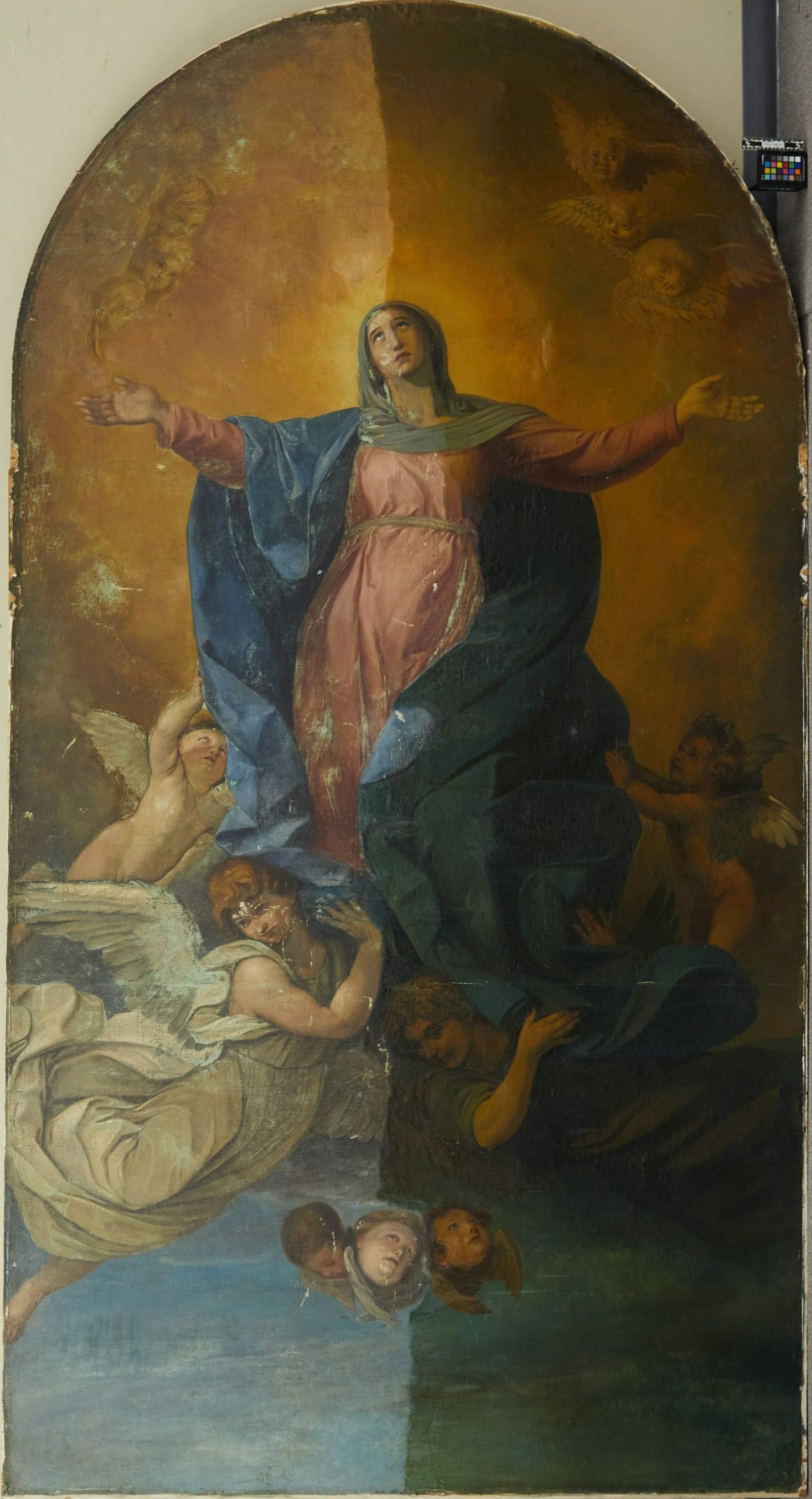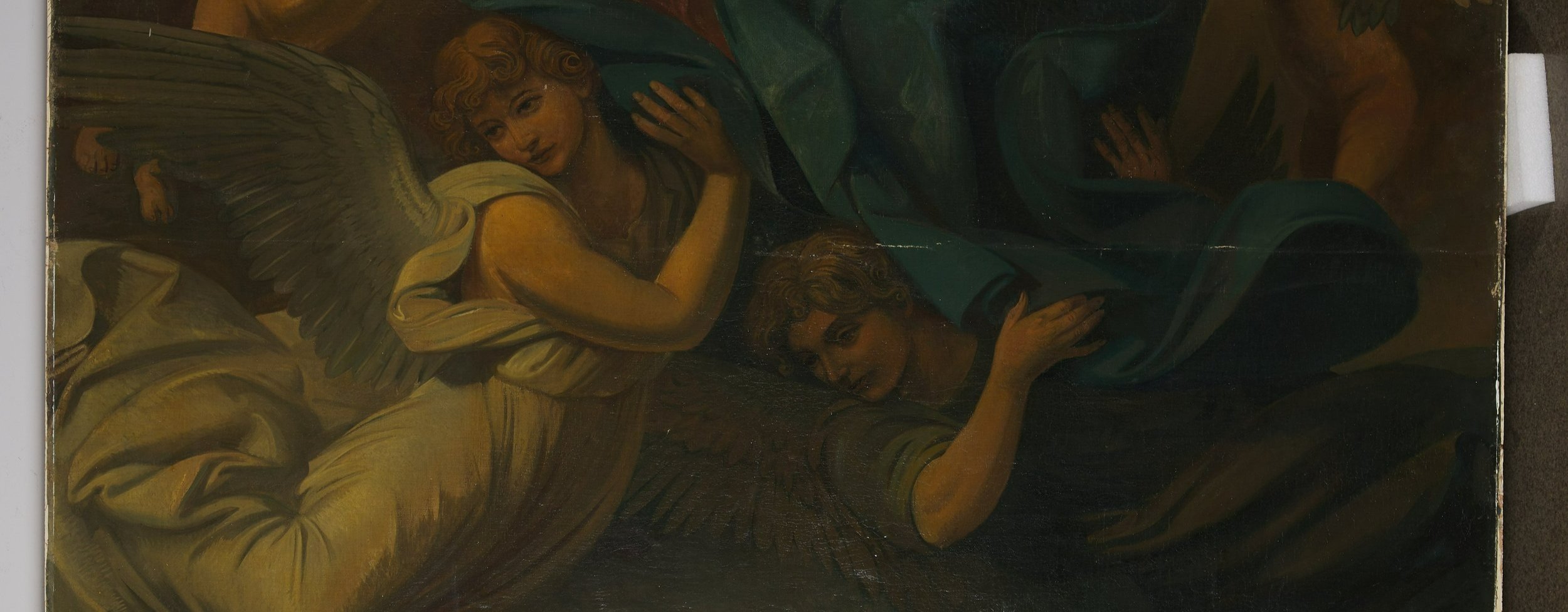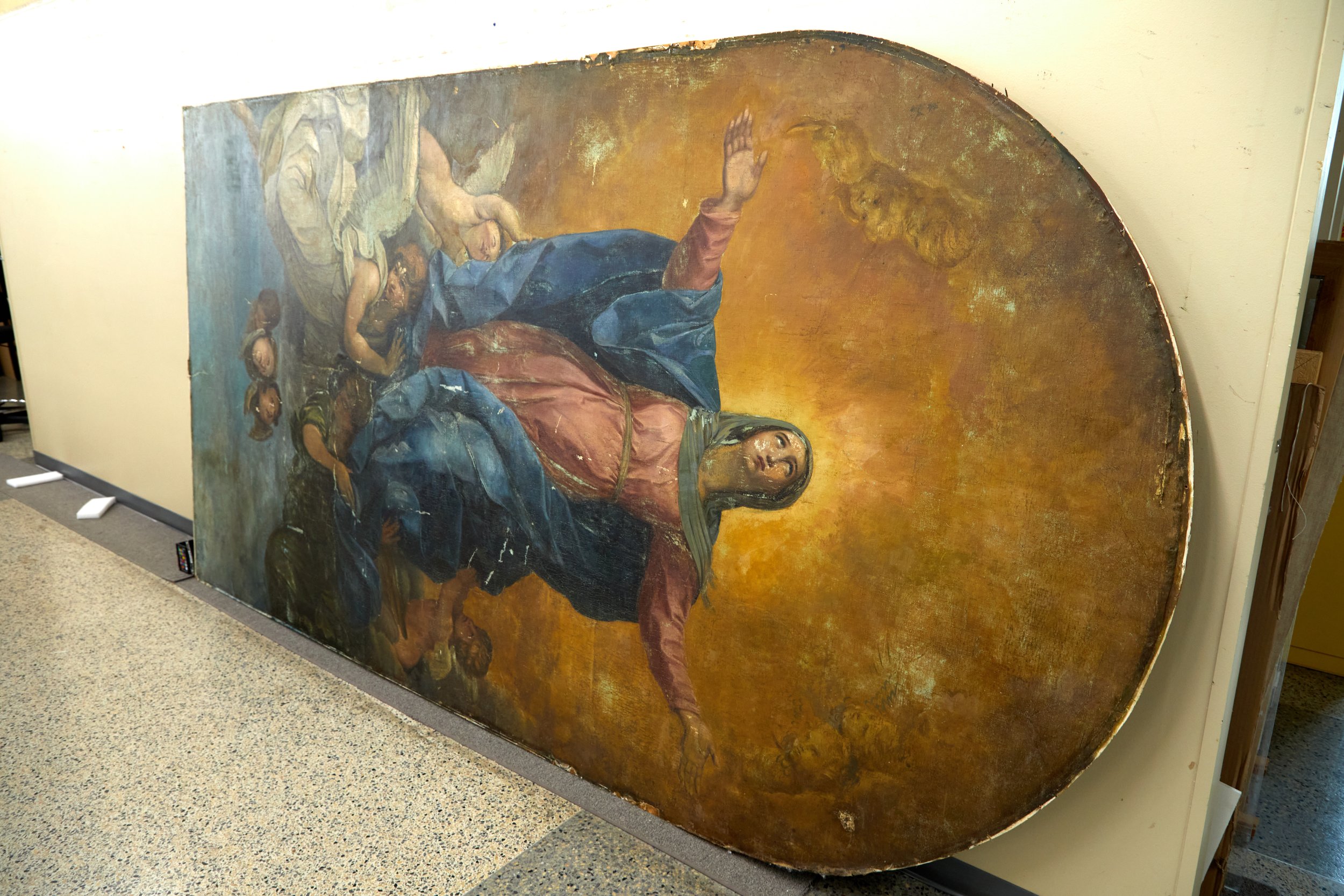The Assumption of Mary during treatment
The Assumption of Mary is a stunning and powerful image. It is a depiction of the event that gives the picture its name: the assumption of Mary into heaven. At nine feet tall, the commanding size creates a powerful experience that draws in the viewer. It's a captivating work of art, full of movement and life. But years of grime, discolored varnish, and mismatched repaint detracted from the painting.
The Assumption of Mary before treatment, shown over four images to capture its size and detail.
In the past, the canvas was cut down and adhered to a plywood board, with many wooden supports nailed to the back. When it arrived at The Center, there were many areas of canvas delamination, and as a result, bubbles of small to large size were visible over the entire surface.
The verso of the painting, showing the plywood board support and wooden support rails.
The recto of the painting, in raking light before treatment. Note the canvas deformations presenting as bubbles in the canvas.
Detail image of canvas deformations before treatment.
The painting had expansive areas of liberally applied repaint that no longer matched. The painting also had a natural resin varnish discolored to yellow, with a moderate layer of grime. The repaint was present in Mary's blue robe, in her pink gown, the dark color with the flying cherubs above her head, the lower teal color of the floor, and in all the figures.
The Assumption of Mary during treatment. Note the cleaning line along the center of the image.
Detail of cherubs during surface cleaning
Detail of Mary during surface cleaning.
Due to the size of the painting, Senior Paintings Conservator Amber Schabdach shared that the treatment is a slow and time-intensive process. The surface was cleaned to remove grime, varnish, and repaint. The transformation of the colors is magnificent, and details are revealed throughout the painting.
The Assumption of Mary during treatment, after surface cleaning.
The Assumption of Mary during treatment, after surface cleaning, shown over four images to capture its size and detail.
Now cleaned, the canvas was removed from the board support and is ready to begin treatment for the structural repairs.
Detail of the canvas verso
Detail of the canvas verso
Detail of the canvas verso
Detail of the canvas verso
Detail of the canvas verso
The frame was recently found in the attic of the church without the current staff knowing of its existence. The frame is in three parts and was constructed as an engaged frame. As discolored as the painting surface was, the frame was no exception. Also affected by years of grime build-up and attic debris, the gilded frame had lost its vibrancy, and the inscription along the top of the frame had lost the strong contrast of black on gold. The heavy layer of dirt and grime was creating a mottled appearance.
Right proper side of the frame, before treatment
Left proper side of the frame, before treatment
Detail image of the frame before treatment. Note the mottled surface
Michael Young, Senior Paintings Conservator, and Associate Conservator Andrew Rigsby are working together on the treatment of this unique frame. Loose elements, areas of loss, and lifting gesso were first consolidated using an appropriate conservation-grade adhesive to ensure the surface was stable before cleaning. Then, the tremendous task of surface cleaning the carved elements of the frame could begin. The grime was removed using appropriate aqueous solutions, revealing the vibrant gold leaf.
Detailed image of the frame before treatment
Detailed image of the frame before treatment
Detailed image of the frame before treatment
During treatment, this video features the surface cleaning of the frame
During treatment, this video features the surface cleaning of the frame
During treatment, this video features the surface cleaning of the frame
With the consolidation complete, further cleaning will begin, along with the recreation of missing elements. An inner frame will be created to make the interior of the frame smaller to fit the cut-down canvas size. We look forward to sharing part two of the conservation of the Assumption of Mary in the upcoming months.



























